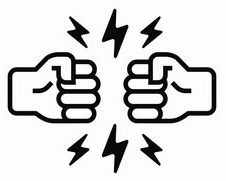What is a brief psychosis?
What is a brief psychosis?
Brief psychotic disorder is a sudden, short-term display of psychotic behavior, such as hallucinations or delusions, which occurs with a stressful event.
How short is a brief psychotic disorder?
Brief psychotic disorder, by definition, lasts for less than 1 month, after which most people recover fully. It’s rare, but for some people, it may happen more than once. If symptoms last for more than 6 months, doctors may consider whether the person has schizophrenia.
Is acute psychosis a DSM-5 diagnosis?
Brief psychotic disorder is defined in DSM-5 as the presence of one or more psychotic symptoms with a sudden onset and full remission within one month [1].
What is the difference between delusional disorder and brief psychotic disorder?
Delusional disorder is distinguished from schizophrenia by the presence of delusions without any of the other symptoms of psychosis (for example, hallucinations, disorganized speech, or disorganized behavior).
What are examples of psychotic disorders?
What Are the Types of Psychotic Disorders?
- Schizophrenia. The most common psychotic disorder is schizophrenia.
- Schizoaffective Disorder.
- Schizophreniform Disorder.
- Brief Psychotic Disorder.
- Delusional Disorder.
- Substance-Induced Psychotic Disorder.
- Psychotic Disorder Due to a Medical Condition.
- Paraphrenia.
How to diagnose a brief psychotic disorder?
How do doctors diagnose brief psychotic disorder? If someone has symptoms, their doctor will give them a checkup, talk to them about their health history, and give them tests such as brain imaging (for instance, MRI scans) or blood tests to rule out other causes. The doctor may refer the person to a psychiatrist or psychologist.
What are the diagnostic criteria for DSM 5?
The Diagnostic and Statistical Manual of Mental Disorders (DSM-5), published by the American Psychiatric Association, lists criteria for diagnosing ODD. The DSM-5 criteria include emotional and behavioral symptoms that last at least six months.
What are the mood disorders in DSM-5?
DSM-5 Changes: Depression & Depressive Disorders Disruptive Mood Dysregulation Disorder. Disruptive Mood Dysregulation disorder is a new condition introduced in the DSM-5 to address symptoms that had been labeled as “childhood bipolar disorder” before the DSM-5’s Premenstrual Dysphoric Disorder. Major Depressive Disorder. Bereavement Exclusion. Specifiers for Depressive Disorders.
How common is brief psychotic disorder?
Brief psychotic disorder is rare. It usually happens for the first time when people are in their 20s or 30s, and it’s more common in women than in men. People who have a condition such as antisocial personality disorder or paranoid personality disorder are more likely to get it.
